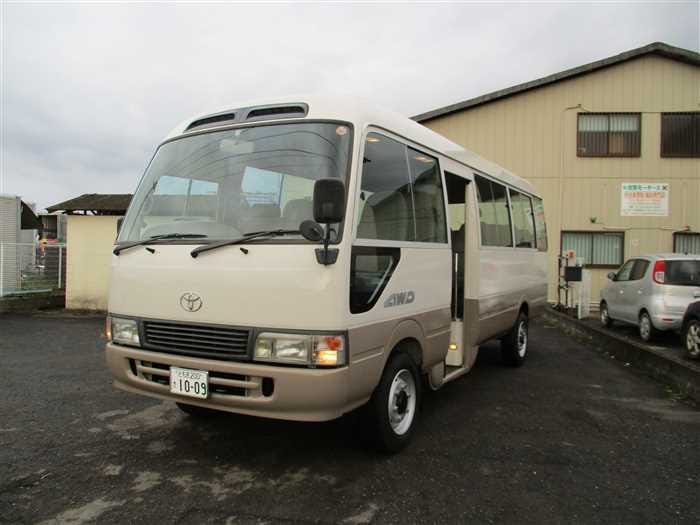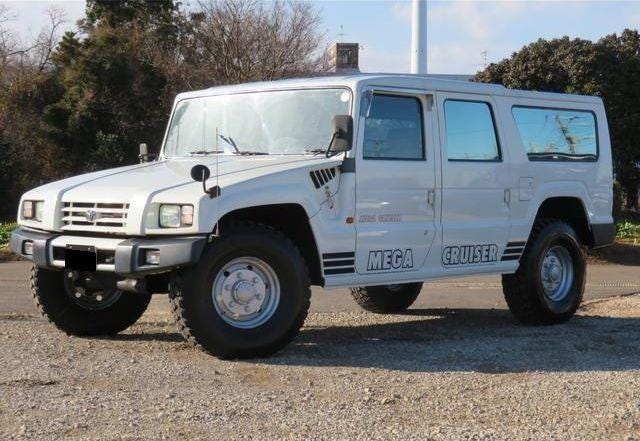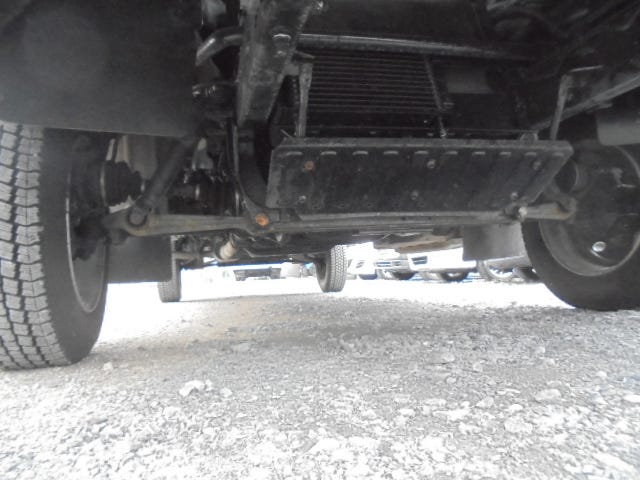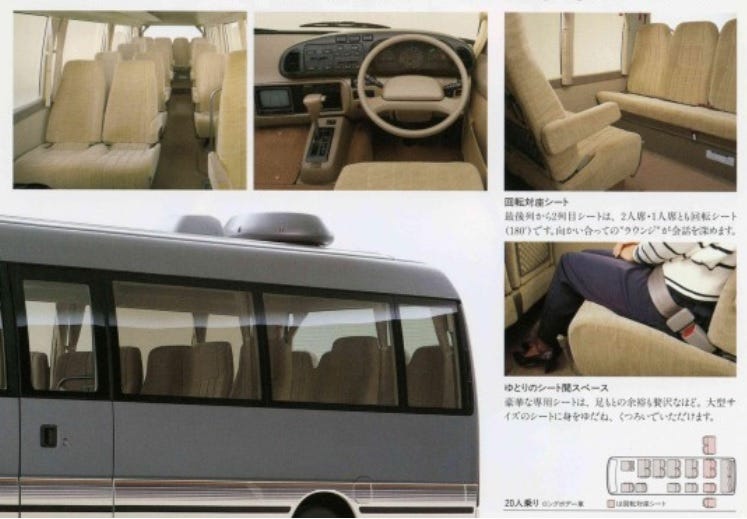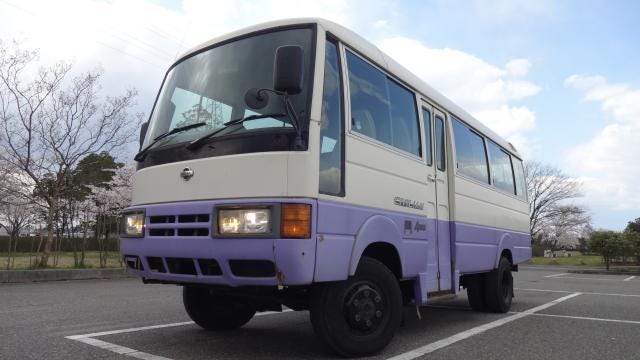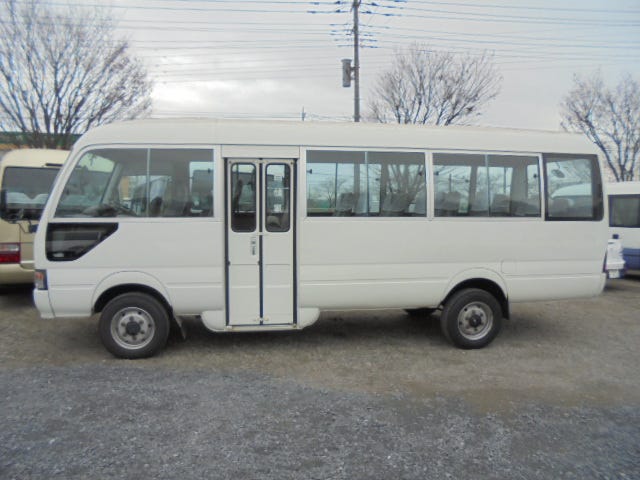Portal axles, inboard brakes, and a front-mid engine layout. A Hummer? No, it’s a 29 seater Toyota Minibus
Toyota once made Hummer clone and then had the audacity to fit its running gear to a 23 ft. minibus
The year was 1995. Japan was at the peak of manufacturing bonkers cars. Toyota being the top dog among the Japanese manufacturers had everything covered from hot hatches to rally cars to world beating luxury cars in the form of Lexus. So naturally Toyota had an almost identical Hummer H1 copy in the pipeline called the Mega Cruiser. What Toyota did next beggars belief. They took the underpinnings of the Mega Cruiser and mated them to their sedate minibus, the Toyota Coaster.
To begin to understand just how unequivocally unique this vehicle was one only needs to look at just how special the Mega Cruiser was. It had portal axles on all 4 wheels. Portal axles are the staple of highly specialized and perceivably exotic off-road machinery like the Unimog, G550 4x42 and of course the H1 Hummer. The Hummer also had independent suspension on all four corners as a means of fulfilling the conditions set by the US military, therefore, so did the Mega Cruiser. The Portal axles also demanded inboard brakes, something only found on focused performance cars at the time. The Mega cruiser also had a central tire inflation and locking differentials like the hummer, and a top of the line Japanese gizmo of the era; 4 wheel steering. The mega cruiser also had air brakes like a heavy commercial vehicle. Toyota had the modesty to hold back on these last 4 features when it came to the coaster. But like the Hummer and Mega Cruiser, the front mid engine layout was retained as the high front differential left no room for an engine above it.
The Coaster is touted as the crème de la crème of Japanese Minibuses for the car like features and engines it offered. The smooth inline 6 power unit that was also found in the 80 and 100 series land cruiser was thrown out in favor of Mega Cruiser’s 4.1 litre 4 cylinder turbo. Transmission options, like the hummer and Mega Cruiser is strictly automatic only. The Coaster’s air suspension was also replaced by the Mega Cruisers Torsion bar system, which has the added advantage of allowing ride height by turning a few bolts.
There’s no denying that Toyota was merely attempting to compete with the onslaught of 4wd minibuses in its domestic market with its 4wd coaster rather than create its own niche market. But instead slapping on a transfer case, some tall springs and a diff at the front and calling it a day, Toyota went all out and borrowed more than necessary hardware from the unlikeliest of places. Production started a month before the Mega Cruiser in December 1995 and went on for nearly 9 years in two guises. The original one to one ‘Mega-Coaster’ with 4 wheel portal axles was produced till April 1997. A second model that was available with a conventional rear axle and dual wheels on either side, stayed in production throughout. The corresponding chassis codes are BB55 and BB58 with the 4 wheel portal axle model carrying the code BB55-ZRPNU.
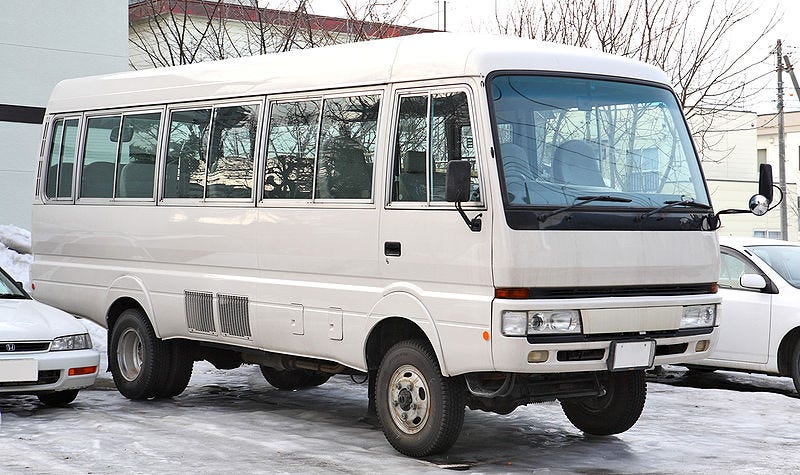
The allure of The Coaster 4wd will always be on its versatile platform with Hummer like underpinnings. The nearly 7 meter length with its forward control layout can be left as it is so you and 28 of your friends can enjoy some serious off-roading, or it can be utilized for some serious cargo carrying volume or better yet, kitted out as a tame, go anywhere camper.
It is unclear how many 4 wheel portal axle coasters were produced. But these passenger hauling unicorns pop up time to time on Japanese export websites, with most being shipped to Australia, where the camper scene for minibuses is strong. If you feel like finding one isn’t challenging enough or, yearn for a commercial vehicle with every single mechanical feature of the Mega Cruiser, you are in luck. Toyota also made a fire engine version of the Dyna with diff locks, central tyre inflation, 4 wheel steering air brakes. But good luck finding those as there were only around 40 made.




